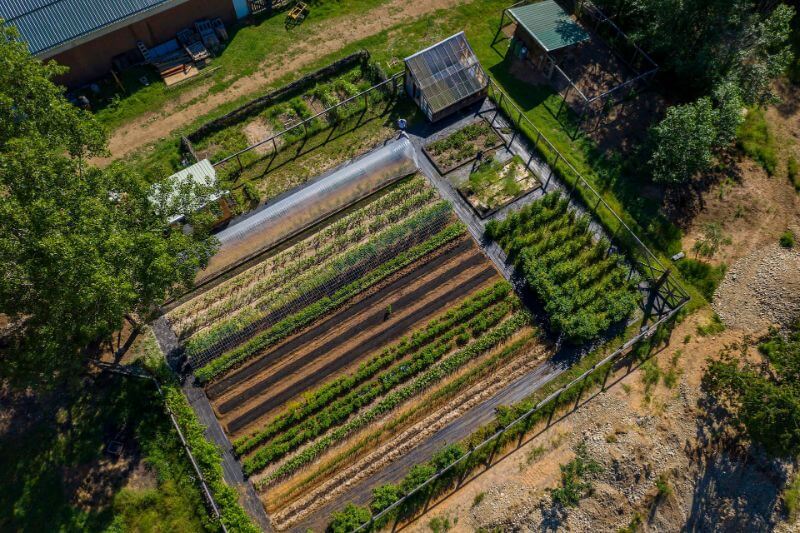Embracing permaculture zones on a 15 acre homestead presents a rewarding journey towards sustainable living. With thoughtful planning and design, you can transform your land into a self-sufficient paradise. Understanding the principles of permaculture zones is key to maximizing the potential of your homestead.

What Are Permaculture Zones?
Permaculture zones are a method of organizing and managing your land based on its proximity to your living area and the frequency of human interaction needed. This concept is vital for a 15 acre homestead as it helps in efficient resource management and energy conservation.
Understanding the Zones
Permaculture design typically includes five zones, each with distinct characteristics and uses. Let’s explore these zones and how they can be applied to your homestead.
Zone 0: The Home
Zone 0 is the heart of your homestead, where you live. It is essential to incorporate sustainable practices such as rainwater harvesting and energy-efficient systems within your home.
Zone 1: The Kitchen Garden
Zone 1 is the area closest to your home, ideal for intensive cultivation of vegetables and herbs that require frequent care. Imagine stepping out of your kitchen to pick fresh ingredients for your meals.
Zone 2: Food Forest and Orchards
In Zone 2, focus on semi-intensive plantings like fruit trees and perennial vegetables. This zone requires less attention than Zone 1 but is crucial for food production.
Zone 3: Livestock and Pasture
Zone 3 is dedicated to larger scale crop production and animal husbandry. This zone is perfect for grazing animals and growing staple crops, which require less frequent care.
Zone 4: Managed Woodlands
Zone 4 serves as a source of timber and other forest products. It requires minimal maintenance and can be a haven for wildlife.
Zone 5: The Wilderness
Zone 5 is left as a natural area for biodiversity and ecological balance. Its a space for learning and observation, where nature can thrive without human intervention.
Planning Your 15 Acre Homestead
Creating permaculture zones on a 15 acre homestead requires careful planning. Consider the natural landscape, water sources, and existing vegetation when designing your zones. Each homestead is unique, and flexibility is key to creating a successful design.
Integrating Water Management
Water is a vital resource on any homestead. Implementing systems like ponds, swales, and rainwater collection can enhance your permaculture design. Efficient water management ensures the health of your plants and animals.
Incorporating Livestock
Livestock can play a crucial role in a permaculture system. Animals provide manure for compost, aid in pest control, and can help maintain pastures. Select breeds suited to your climate and land conditions for optimal results.
Building Soil Health
Healthy soil is the foundation of a productive homestead. Practices such as composting, mulching, and crop rotation can enhance soil fertility and structure, ensuring long-term productivity.
Challenges and Solutions
While establishing permaculture zones on a 15 acre homestead presents challenges, solutions are available. Common issues include water scarcity, pest management, and soil degradation. Collaborating with local permaculture communities and accessing resources can provide valuable insights and support.
Overcoming Water Scarcity
Implement water-saving techniques such as greywater systems and drought-resistant crops to combat water shortages. Regularly assess your water usage and adapt as needed.
Pest Management
Integrated pest management strategies can help control pest populations naturally. Encourage beneficial insects and use companion planting to reduce reliance on chemical pesticides. Learn more about integrated pest management.
Addressing Soil Degradation
To improve soil health, incorporate organic matter and reduce tillage. Implement cover cropping to prevent erosion and enhance soil fertility.
Embracing Community and Education
Engaging with local permaculture groups and attending workshops can enhance your knowledge and skills. Sharing experiences and learning from others fosters a supportive community environment.
Learning Resources
Online courses, books, and podcasts provide valuable information on permaculture practices. Listen to insights from experienced homesteaders on this podcast on modern homesteading.
Networking Opportunities
Participate in local permaculture events and forums to connect with like-minded individuals. Collaborate on projects and exchange ideas to enhance your homesteading journey.
Conclusion
Designing permaculture zones on a 15 acre homestead is a transformative process that promotes sustainability and self-sufficiency. By understanding and implementing permaculture principles, you can create a thriving and resilient homestead that benefits both people and the planet. Start planning your permaculture journey today and reap the rewards of a sustainable lifestyle.

FAQ Section
What is the primary goal of permaculture zones?
The primary goal is to efficiently organize and manage land to maximize productivity and sustainability by aligning with natural patterns.
How can permaculture zones benefit my homestead?
Permaculture zones help in efficient resource management, energy conservation, and creating a self-sustaining ecosystem on your homestead.
Can I implement permaculture zones on smaller land?
Yes, the principles of permaculture zones can be adapted to any size of land, from small gardens to large homesteads.




